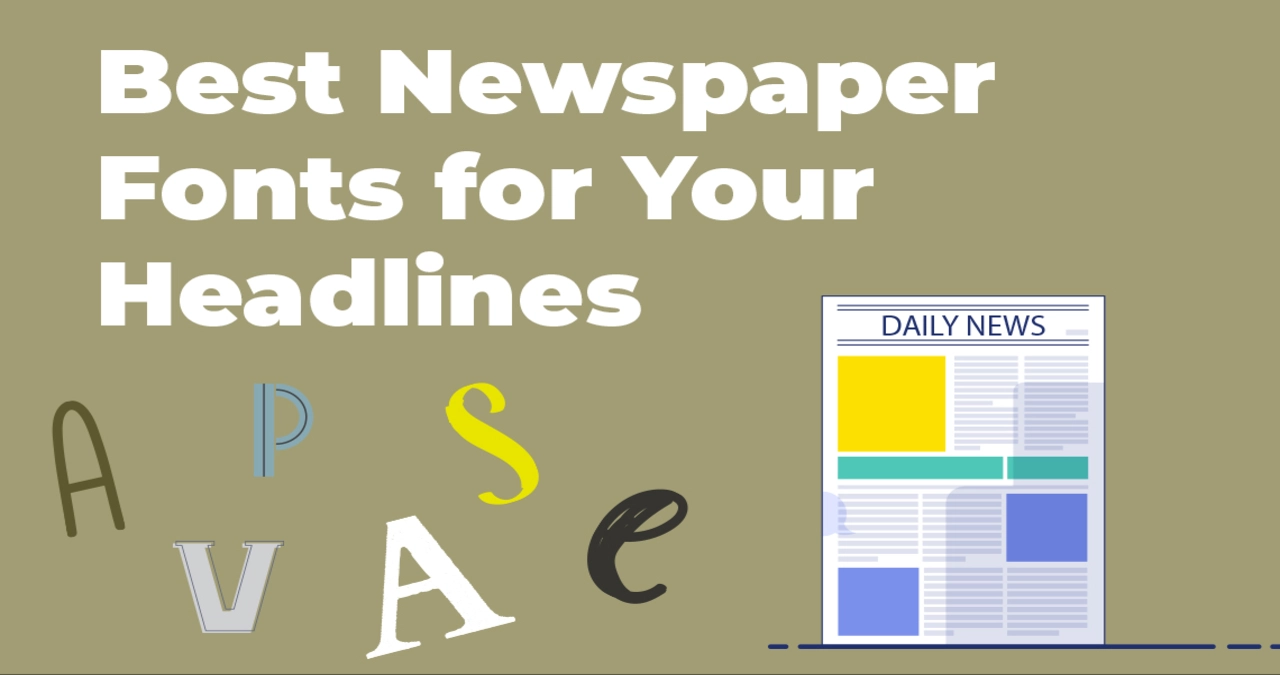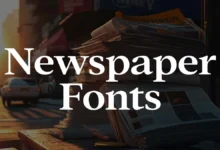Newspaper Headline Font: Understanding the Power of a Newspaper Headline Font

Newspaper Headline Font are more than a stylistic choice they’re essential for grabbing the reader’s attention and making the content stand out. From the bold, impactful typefaces of the past to the sleek, modern designs of today, a headline font has a significant influence on how the news is perceived. This article delves into the world of newspaper headline fonts, exploring their evolution, their role in modern journalism, and the crucial factors that influence their design. Whether you’re a designer, a journalist, or simply someone with an interest in typography, understanding the importance of a headline font can change the way you look at newspapers and online news platforms.
In this article, we’ll explore how a newspaper headline font can shape the perception of an article. You’ll gain insight into the historical significance of fonts in print media, their psychological impact on readers, and the technical aspects of designing the perfect typeface for a headline. By the end, you’ll understand why selecting the right font is crucial for any publication, whether it’s a local newspaper or an international media outlet.
The Historical Journey of Newspaper Headline Fonts
The story of newspaper headline fonts stretches back over a century. The importance of typography in newspapers has evolved, with the choice of font playing a key role in how news is presented to the public. In the early days of print, fonts like Times New Roman and Baskerville dominated the pages, exuding a sense of formality and sophistication. These fonts were carefully chosen to maintain readability while evoking a sense of authority and professionalism.
However, as the newspaper industry grew, there was a constant push to stand out visually. Designers and editors sought fonts that would differentiate their publications and capture the attention of a broad audience. This drive led to the rise of bolder, more eye-catching fonts in the mid-20th century, often featuring heavy strokes and distinctive characteristics. Fonts like Impact and Frank Ruhl became synonymous with attention-grabbing headlines, becoming staples in newsrooms worldwide.
The evolution didn’t stop there, though. As technology advanced, digital typefaces began to replace traditional metal typesetting. This shift brought the opportunity for even greater creativity and customization in newspaper headline fonts. Designers could now experiment with a variety of styles, making it easier to tailor the appearance of the font to fit the tone of the article or the personality of the publication.
The Rise of Digital Typography and Its Impact

In the late 20th century, the introduction of digital typography transformed the way newspapers approached headline design. Traditional printing presses gave way to digital typesetting, and with it came an explosion of new typefaces. The ability to manipulate fonts on screen opened up new possibilities for creative expression. Headlines could now be rendered in unique ways that were once impossible with physical type.
Digital fonts offered a wider range of options, from sleek and modern sans-serifs to more traditional serifs. As publications increasingly moved online, the need for fonts that were readable on screens became paramount. This led to the rise of web-friendly fonts like Helvetica, Arial, and Georgia, which combined legibility with style. These fonts became essential for online newspapers, where readability on both desktop and mobile screens was crucial.
In the world of digital media, newspaper headline fonts had to adapt once again. Typography for the web differs from traditional print fonts in that it needs to be flexible, responsive, and easy to read across various devices. Designers have to strike a balance between aesthetic appeal and functional legibility, ensuring that the font works well in both large headlines and smaller subheadings. As web design has become more sophisticated, the role of typography has only grown in importance, with fonts now being a key element of a publication’s overall branding strategy.
How Newspaper Headline Fonts Impact Readership
When a reader first encounters a newspaper or an online news article, the headline is the first thing that catches their eye. The choice of font can have a significant impact on whether or not they decide to continue reading. This is why the design of a headline font is so crucial it must not only attract attention but also set the tone for the content that follows.
A bold, dramatic font might evoke a sense of urgency or excitement, while a more classic, serif font can convey trustworthiness and reliability. The psychology behind font choice plays a key role in shaping how a reader feels about the story. For example, a headline about a political scandal might use a strong, no-nonsense font to convey the gravity of the situation, while a lighthearted entertainment piece might feature a playful, casual typeface to set a more relaxed mood.
Fonts as an Extension of Editorial Voice
Just like any other aspect of design, a headline font is an extension of the editorial voice. The font you choose can communicate a lot about the publication’s stance, values, and target audience. A highly stylized font might be used in a publication that aims to present itself as cutting-edge and innovative, appealing to a younger, more design-conscious audience. On the other hand, a more traditional newspaper may opt for a classic serif font that exudes authority and professionalism.
In today’s competitive media landscape, newspapers need to maintain a unique identity, and this is where font selection comes into play. A publication’s font can become as recognizable as its logo or tagline, helping to establish a strong brand presence. Think about major publications like The New York Times or The Washington Post the fonts used in their headlines are instantly recognizable and convey the stature and credibility of these institutions.
Moreover, fonts are not just about looks they also affect how easily readers can engage with the content. A font that is too ornate or complex may discourage readers from diving into the article, while a simple and clean font encourages effortless reading. Headline fonts must strike a balance between visual appeal and functional readability, ensuring that they not only capture attention but also invite the reader to continue exploring the story.
Choosing the Right Newspaper Headline Font: Key Considerations
Selecting the right newspaper headline font is an art and a science. Several factors need to be considered, ranging from the tone of the article to the intended audience. Here, we’ll look at some of the most important considerations when choosing a font for a newspaper headline.
Readability and Legibility
Above all else, a headline font must be legible. It’s easy to get caught up in the creative aspect of font selection, but readability should always be the top priority. A headline, no matter how visually striking, is ineffective if readers cannot quickly and easily make out the text. This is especially true for printed newspapers, where fonts must be optimized for both high- and low-resolution printing.
For web-based publications, legibility is just as critical, as headlines need to be easily readable on devices of various sizes. Fonts with clean lines and clear letterforms are ideal, as they reduce the risk of confusion and make it easy for readers to skim the headline. Simple sans-serif fonts like Arial, Helvetica, and Roboto are often preferred for their clarity, while serif fonts like Georgia and Times New Roman are traditionally used for their readability in print.
Matching the Tone of the Story
The tone of the headline should match the type of font used. For example, an investigative news piece about corruption may benefit from a more formal, sturdy serif font, as this conveys seriousness and authority. Conversely, a feature about an exciting new technology might use a modern, sans-serif font to convey innovation and progress.
Additionally, fonts can be used to differentiate between sections of a newspaper. A serious political article might feature a bold serif font, while entertainment or lifestyle content may use a lighter, more playful typeface. By carefully choosing the right font, a publication can reinforce the theme and tone of each article, providing readers with a more immersive experience.






